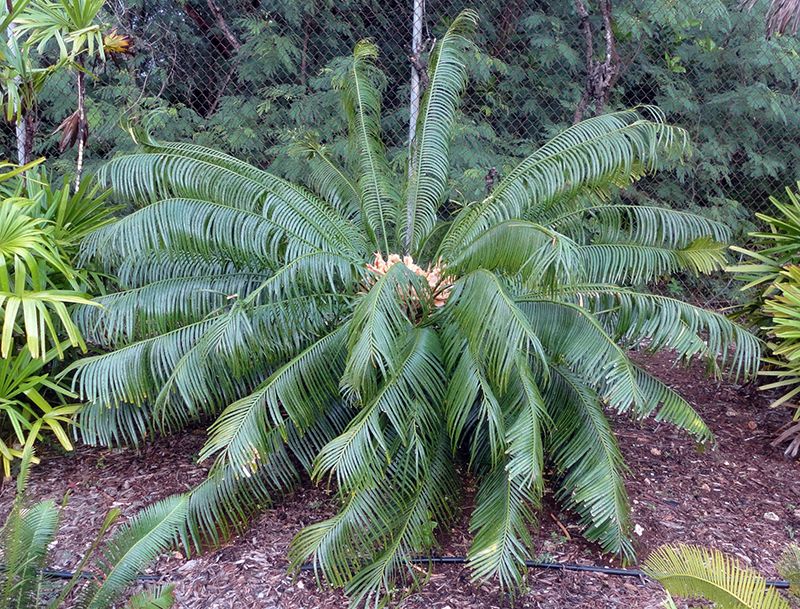Press Release: Cycad stem cuttings need wound sealants for successful propagation
Press Release: Cycad stem cuttings need wound sealants for successful propagation
Press Release: Cycad stem cuttings need wound sealants for successful propagation
6/30/2020
For more information, contact:
Olympia Terral
Research Associate
Western Pacific Tropical Research Center
University of Guam
Tel: (671) 735-2092
Email: olympiat@triton.uog.edu

Guam is home to Cycas micronesica, an arborescent cycad species that is facing threats from several invasive insect pests. The once widespread tree has been decimated from the forests on Guam and the nearby island of Rota, leading the International Union for Conservation of Nature to list the gymnosperm tree species as endangered.
Additionally, large expanses of forests are being bulldozed on Guam for construction activities, according to Benjamin Deloso, one of the authors of the study.
“Many of these forests contain populations of our endangered cycad, and rescue activities have included the use of stem cuttings to propagate the trees in an effort to conserve the genetic diversity within the construction sites.”
This has driven the Guam authors to, for the past decade, look into various issues that enable success of asexual propagation of cycad plants.
In their seven-month study, 100% of the cuttings that were left untreated died prior to adventitious root formation. In contrast, all of the cuttings that received wound sealants from various products exhibited 100% survival at the end.
When cycad stem cuttings are removed for propagation purposes, the exposed parenchyma tissues of the wound are highly vulnerable to desiccation and pathogens. Cycad horticulturists treat the open wounds with sealants to sustain hydration within the cuttings and exclude pathogens.
The authors employed an innovative approach to the study by comparing various common products that are not normally exploited for horticultural use. Petroleum jelly, lanolin paste, honeycomb wax, and even modelling clay were shown to be fully capable of enabling success in the nursery study. The findings indicate almost any malleable, clean product that effectively formed a seal over the wound and retained hydration throughout the propagation phase was effective.
The team’s past research has shown that carbohydrate depletion following chronic infestations of the invasive insect pests reduces the ability of stem cuttings to produce adventitious roots.
“Using this prior information, we designed nursery studies to determine which protocols that reside in cycad propagation folklore are required and which can be ignored,” Deloso said. “When one is working with an endangered tree species, the stakes are raised. The results from replicated studies should support nursery management decisions if possible.”
Cycad plants construct unique stems that are mostly comprised of soft parenchyma tissue. The innovative engineering of cylindrical vascular tissues and tough exterior layers allow heights of 18 meters or more to be obtained despite the copious amounts of soft internal tissue.
The Guam-based research that informs the ongoing propagation studies began in 2009 when anatomy methods were used to determine how the tissues within a cycad stem respond to a wound. The external tissues of an intact cycad stem include a protective layer called periderm, which retains moisture on the inside and excludes pests and pathogens from the outside. Secondary tissue degradation ensues if the integrity of the periderm is challenged by an open wound. Intact cycad stems eventually seal off the problematic areas with a corky layer called phellem.
“This informative research means that cycad horticulturists have known for more than a decade that some kind of protective sealant is needed to cover an open wound on a cycad stem cutting,” Deloso said. “The sealant acts as an artificial phellem.”
The University of Guam continues to expand the practical knowledge that is needed to inform these conservation activities.
